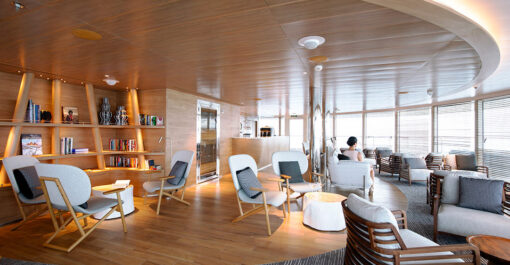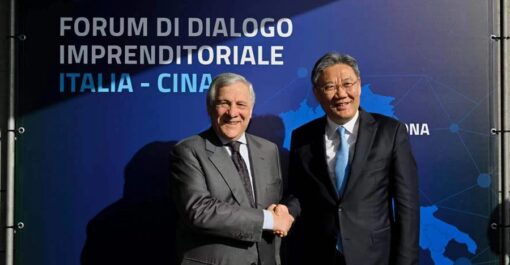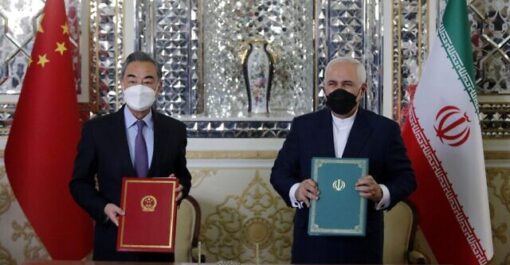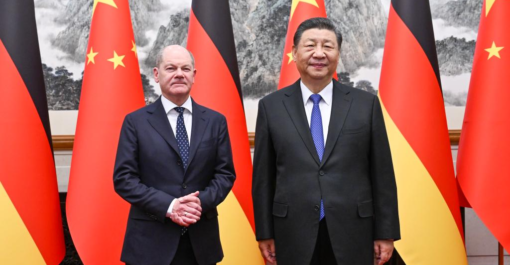a cura di Assonave. Roma, 24 settembre 2020 – Si è tenuta a Roma, sotto la presidenza dell’Ambasciaotore Vincenzo Petrone, l’assemblea degli associati e degli aggregati di Assonave, l’associazione che rappresenta l’industria navalmeccanica italiana e che ha approvato il Bilancio 2019 e il Preventivo 2020.
Ne è emerso un quadro del settore cantieristico mondiale che, dopo un 2019 già deludente, con ordini calati del 20% in volume rispetto all’anno precedente, ha visto crollare gli ordini nel primo semestre del 2020 del 40% e le consegne del 17%, a seguito della crisi mondiale generata dal Covid-19.
In questo contesto, in Europa, si assiste a una discontinuità negativa rispetto al passato, quando, grazie all’esplosione del settore crocieristico, si registravano ordini e carichi di lavoro in crescita a fronte della tendenza opposta dei produttori di altre aree geografiche.
Nel primo semestre 2020 in Europa gli ordini sono infatti calati del 62% e le consegne del 48%, dati ben peggiori rispetto a quelli globali.
In particolare, la relazione annuale mostra che il settore cruise ha registrato nel 2019 un aumento degli ordini delle navi sopra i 10.000 tsl da 23 a 25 unità, per poi registrare ordini per due sole navi nella prima metà del 2020.
Quanto al comparto militare, nel 2019 sono stati perfezionati ordini per 165 unità, con una riduzione del 28% circa rispetto all’anno precedente, che diventano solo 49 unità, in ulteriore calo a 49 unità nella prima metà 2020.
Il mercato dei ferry vede un calo del 40% nel 2019 e, nel 2020, ordini azzerati nel segmento di maggior interesse, quello di unità di lunghezza superiore a 150m. La nautica da diporto ha fatto registrare un +9,7% nel 2019 (fonte Confindustria Nautica), con 26 nuovi ordini di mega-yacht (mezzi di lunghezza maggiore di 60 metri), in linea con gli anni precedenti.
Il segmento Oil & Gas Offshore, infine, si conferma praticamente fermo, con un solo nuovo ordine di Rigs nel 2019, e ordini per 20 supply vessels, di piccole dimensioni, assegnati per la quasi totalità a cantieri cinesi e turchi (in passato erano centinaia); nella prima metà del 2020 il mercato Oil & Gas si è praticamente azzerato. Nel 2020, nel mercato globale, sono crollati i nuovi ordini in tutti i segmenti di mercato, e, purtroppo, e difficile prevedere un’inversione di tale tendenza almeno fino a tutto il 2022.
La cantieristica italiana e la relativa supply chain, grazie alla propria capacità strategica, al conseguente ottimo portafoglio ordini costruito in passato e alla propria capacità di interagire positivamente con gli armatori, limitando al minimo, almeno per ora, le cancellazioni, si trova in una situazione sicuramente migliore rispetto al resto dell’Europa.
Ciò nonostante, il fatto che in Italia, oltre che in Europa, la stragrande maggioranza dei nuovi ordini di navi commerciali appartenga al segmento passeggeri, pone l’intero sistema a rischio, qualora il mercato delle crociere non dovesse riprendersi in tempi sufficientemente contenuti.
Tale rischio si può mitigare solo implementando efficacemente tre direttive strategiche: 1) Attività volte alla sopravvivenza e al rafforzamento competitivo del settore navalmeccanico italiano ed europeo nel breve periodo; 2) Attività volte a creare le condizioni per permettere al settore navalmeccanico italiano ed europeo di prosperare nel lungo periodo; 3) Attività volte a massimizzare la capacità competitiva degli associati.
La prima direttiva comprende tutte le attività volte al presidio dei temi di finanza agevolata in vista della programmazione economica 2021-2028 e delle opportunità derivanti dal Recovery Fund.
In quest’area rientrano un certo numero di proposte di interventi temporanei, che si stanno portando avanti in maniera coordinata con l’Europa, quali: programmi di rinnovo della flotta Ue;
programmi di “Public Procurement” (sia in area civile che militare); incentivi fiscali per quei cantieri e fornitori navali in grado di porre in essere attività virtuose e in linea con le direttive strategiche della Commissione europea (verde, digitale, sicurezza dei processi produttivi, competitività etc.);
incentivi finanziari per gli armatori, mirati al mantenimento dell’attuale carico di lavoro; soluzioni per facilitare l’accesso alla finanza agevolata per le Pmi che esprimono tecnologia marittima;
soluzioni in grado di favorire il mantenimento e la formazione dell’attuale forza lavoro; attività per sfruttare al meglio le opportunità derivanti dal Partenariato Industriale Co-Programmato con la Commissione Europea (CPP) denominato “Zero Emission Waterborne Transport”, dal momento che il settore è stato, per la prima volta, selezionato per tale importante partenariato che porta con se un budget richiesto per il settore navalmeccanico di circa un miliardo di euro.
Della seconda direttiva strategica fanno invece parte quelle attività volte alla salvaguardia dell’industria navalmeccanica europea dalle pratiche di concorrenza sleale provenienti dall’Est asiatico, onde assicurare che, una volta superato il momento negativo, vengano nel frattempo rimosse quelle condizioni che hanno permesso in passato all’industria asiatica di soppiantare quella europea in gran parte dei segmenti di mercato della navalmeccanica.
Questo è potuto accadere grazie all’utilizzo di pratiche strutturali di dumping supportate da sussidi statali continuativi, contro cui non è stato possibile agire, poiché le regole a tutela della concorrenza previste dal WTO non si applicano purtroppo a questo settore. Ciò evidenzia un buco legislativo che dovrà essere al più presto sanato, partendo, con ogni probabilità, con iniziative unilaterali, una volta implementate le quali, sarà anche più facile tornare a negoziare da una situazione di forza con i Paesi asiatici, i quali, finora, essendo in una posizione di forza, si sono guardati bene dal lavorare seriamente per trovare una soluzione di reciproca soddisfazione.
Alla terza direttiva strategica sono invece riconducibili le attività formative, informative, di networking e di collaborazione volte all’ottenimento di economie di scala che Assonave da tempo promuove a favore dei propri soci: tali attività, di per sé fondamentali, risulterebbero però inutili senza un’efficace implementazione delle prime due linee strategiche che, di fatto, sono di competenza politica e governativa. In tale contesto sono le associazioni a dover efficacemente operare per mettere il mondo politico e governativo nazionale ed europeo nella condizione di comprenderne le dinamiche e i problemi del settore e, successivamente, identificare soluzioni efficaci e durature.
L’assenza di un importante presidio di tali linee strategiche, di competenza primaria delle Associazioni, ha purtroppo prodotto in passato risultati nefandi, tra cui la perdita di interi segmenti di mercato e delle relative competenze.
Tali attività, ora più che mai, non potranno infatti mai essere portate avanti da una singola azienda, per quanto grande, competitiva ed efficiente, ma solo da un’Associazione sufficientemente forte, strutturata e supportata dai propri soci. Svolgere tali attività è l’obbiettivo che Assonave si pone per i prossimi anni, in un momento decisivo in cui si rischia seriamente di lasciare alla concorrenza asiatica i segmenti ancora rimasti in Europa. Ed è per questo che Assonave definisce questa fase come quella dell’Ora o mai più.
A margine dell’assemblea, il Presidente di Assonave Petrone ha dichiarato: «Il nostro comparto sta affrontando coraggiosamente la difficile congiuntura industriale e di mercato e chiede alla Commissione europea e al Governo di tenere in debito conto il ruolo vitale che la cantieristica riveste nel contesto economico italiano ed europeo. Non invochiamo aiuti di Stato, ma supporto all’innovazione tecnologica e alla transizione green verso navi a zero emissioni. Chiediamo inoltre al nostro Esecutivo, con Confindustria di cui Assonave è parte integrante, un punto di riferimento istituzionale unico per l’Economia del Mare, che oggi fa capo a quattro diversi dicasteri, con le comprensibili difficoltà di coordinamento e di progettualità che questa frammentarietà comporta».
Petrone ha poi concluso: «A Bruxelles chiediamo di difendere la navalmeccanica europea dalla concorrenza sleale, pesantemente sussidiata, dei costruttori asiatici che operano in dumping a danno dei produttori del nostro continente».
«Now or Never». Rome, 24 September 2020 – The General Meeting of the associated and affiliated members of ASSONAVE, the Italian shipbuilding industry association, was held in Rome, chaired by Ambassador Vincenzo Petrone, to adopt the financial statements of 2019 and the budget for 2020.
In the overview of the global shipbuilding industry – already disappointing in 2019 with a 20% drop in orders in terms of volume over the previous year – orders in the first semester 2020 plunged by 40% and deliveries decreased by 17% as a result of the global Covid-19 crisis. In this framework, trends in Europe have been totally disrupted, as, with the explosion of the cruise sector, orders and workloads were growing in contrast with the opposite trend of manufacturers in other parts of the world.
In Europe, in the first semester 2020, orders dropped by 62% and deliveries by 48%, much below the global average.
In particular, the annual report shows that, in the cruise sector, orders of ships exceeding 10.000 grt rose from 23 to 25 units in 2019, but there were only 2 orders for ships in the first half of 2020. In the military sector, in 2019, 165 units were ordered, with a drop of 28% over the previous year, going further down to 49 units only in the first six months of 2020. The ferry market dropped by 40% in 2019, and in 2020 orders went down to zero in a major segment, i.e. vessels exceeding 150 mt.
The sector of pleasure vessels and yachts rose by 9.7% in 2019 (source: Confindustria Nautica), with 26 new orders of megayachts (vessels exceeding 60 mt) in line with the trend in recent years. Finally, the Oil & Gas Offshore segment was sluggish, with 1 new rig order only in 2019 and orders for 20 small supply vessels almost entirely allocated to Chinese and Turkish shipyards (in the past, there were hundreds of these orders); in the first half of 2020, the Oil & Gas market basically went down to zero. In 2020, new orders plunged in all market segments at global level and unfortunately this trend is likely to continue at least until the end of 2022.
The Italian shipbuilding industry, and the relevant supply chain – thanks to its strategic capacity, and its excellent order portfolio, which was built up in the past, as well as its capacity to positively interact with ship-owners, minimizing any termination, at least so far – is undoubtedly in a better position than the rest of Europe. However, in Italy, as well as in Europe, most new orders of commercial vessels are passenger ships, and this is a risk for the whole system, if the cruise market does not recover relatively fast.
This risk can only be mitigated by implementing three strategic guidelines effectively: 1) Activities ensuring the survival and the competitive reinforcement of the Italian and European shipbuilding industry in the short term; 2) Activities aimed to create the conditions to enable the Italian and European shipbuilding sectors to thrive in the long term; 3) Activities to maximize the competitive capacity of members.
The first guideline includes activities on financial incentives in view of the 2021-2028 financial planning and the opportunities resulting from the Recovery Fund.
This area also includes a certain number of draft temporary actions that have been implemented in coordination with Europe, such as: EU fleet renewal programmes; public procurement programmes (both in the civil and the military areas); tax relief schemes for shipyards and maritime suppliers that are able to implement virtuous activities and in line with the strategic directives of the European Commission (environment, digitalization, safety of manufacturing processes, competitiveness, etc.); financial incentives for ship-owners to preserve the current workload; solutions to ease access to financial incentives for SMEs with maritime technology; solutions to retain and train the current workforce; activities to leverage on the opportunities resulting from the co-planned industrial partnership, “Zero Emission Waterborne Transport”, as the sector has been selected for this major partnership with a requested budget for the shipbuilding sector amounting to about 1 billion euro.
The second strategic guideline includes the activities on the protection of the European shipbuilding industry from unfair competition practices in East Asia, so that, when the adverse trend is over, any conditions that, in the past, enabled the Asian industry to replace the European industry in most shipbuilding market segments, will be removed in the meantime.
This has been caused by structural dumping practices, supported by continuous State subsidies, and no action could be taken, as unfortunately WTO competition rules do not apply to this sector. In this respect, a regulatory gap has been identified and it has to be filled as soon as possible, starting, most likely, from unilateral actions; after that, it will be easier to start negotiating from a strong standpoint with Asian countries which so far have been very far from working seriously to find a mutually satisfactory solution.
The third strategic guideline includes training, information, networking and cooperation to achieve scale economies that Assonave has been promoting for a long time for its members: these activities, which are fundamental, would turn out to be useless if the other two guidelines, which are under the political and government responsibility, are not implemented successfully.
In this context, associations must work effectively and create any appropriate condition for national political and governmental stakeholders to understand how the sector works and the relevant issues with a view to identifying effective and long-term solutions. In the past, the lack of support for these strategic guidelines, which is part of the Associations’ role, unfortunately generated an extremely adverse impact, such as the loss of entire market segments and the relevant competences.
These activities – now more than ever – cannot be pursued by a single company only, irrespective of its size, competitiveness and efficiency: this is the role of an Association that must be strong enough, organized and supported by its members. Assonave aims at performing these activities in the next few years, at a decisive time, when segments that are still in Europe actually risk to be left to Asian competitors. This is why Assonave has defined this phase as “Now or Never».
On the occasion of the General Meeting, the Chairman of Assonave, Ambassador Vincenzo Petrone stated: «Our sector is bravely coping with the difficult industrial and market outlook and it’s asking the European Commission and the Government to take into due account the vital role of the shipbuilding industry in the Italian and European economic context.
We are not asking for State aids, we are asking for support for technology innovation and green transition to zero-emission vessels. We are also asking our Government, together with Confindustria, of which Assonave is an integral part, to provide one institutional reference point for the Maritime Economy, as this sector is currently divided into four different ministries, and this division results into coordination and planning issues».
Mr Petrone finally added: «We are asking Brussels to defend the European shipbuilding sector from unfair competition, which is heavily subsidised, as Asian manufacturers implement dumping practices to the detriment of European manufacturers».








